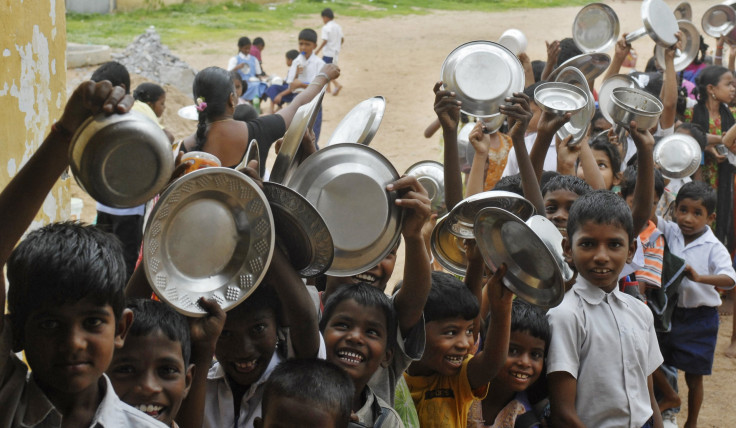Tainted Food At Indian School Kills 22; Midday Meal Scheme For Students Marred By Controversies Since Its Widespread Adoption in 2001

India's latest midday meal scheme disaster, which claimed the lives of 21 students and a cook, at a primary school in the eastern state of Bihar, has once again shifted focus to the quality of meals served as part of the government program, which is intended to encourage the country's poor to send their children to school.
According to official data, the midday meal program, which was initiated in the 1960s to provide food to school-going children without burdening their parents, and to reduce dropout rates, currently caters to about 120 million children at more than 1.2 million schools across the country.
“The midday meal scheme is a brilliant scheme because close to 60 percent of the children in the country are malnourished,” Ambarish Rai, head the Right To Education forum, told International Business Times.
"What happened in Bihar is tragic, but with proper management the scheme it could be turned into something that benefits children from lower income groups," Rai said, noting that the scheme needs to be institutionalized for it to be more effectively administered.
According to initial reports, a container that previously held insecticide was used to cook vegetables served to the students, and resulted in the death of 21 students and a school cook. And, more more than 20 students have been hospitalized after eating the meal, which reportedly contained traces of insecticide.
"It is a criminal case of poisoning," Bihar's education minister Prashant Kumar Shahi told The Times of India.
The latest incident is a harsh indictment of a program reported to be plagued by corruption, pilfering and periodic cases of food-poisoning, and could well cripple the government’s objective of improving the health of, and providing better educational facilities, to children of the country’s poor.
“There is no question of eating the mid-day meal. I will not take any chance after Tuesday’s disaster,” Sanju Devi, mother of a student, told Rediff.com.
A number of parents, whose children are recovering after consuming the tainted food, told Rediff.com that they would not send their children back to school.
“It is better that my son remains illiterate than dead,” one parent said.
Since the scheme was adopted by government-run schools in almost every Indian state, following a Supreme Court ruling in 2001, the scheme has been marred by controversies.
According to reports, instances of corruption are rampant with funds earmarked for the program being siphoned off by people appointed to manage the scheme.
And, a lack of funds to develop the infrastructure required to administer such a program on a nationwide scale is also a factor in the haphazard management of the midday meal scheme, according to a World Food Programme report released in 2007.
In Bihar alone, where more than 22,000 government schools do not have proper kitchens to prepare food, there have been reported incidents of insects, lizards, frogs, and rats found in the food served to children, a DNA report said.
Last month, the midday meal scheme in a government school in the coastal state of Goa, in western India, came under the spotlight when 86 students fell ill after consuming a meal as part of the scheme. According to The Goan, there have been multiple cases of food poisoning last year alone, and in 2009, as many as 15 cases of food poisoning were reported.
Food contamination is not the only problem associated with the government scheme, and reports note that the food provided to school-going children is unhealthy and lacks sufficient nutrition.
Samples of food taken from government school kitchens in Delhi in 2012-2013 showed that 83 percent of the food samples failed to meet the required nutritional values stated by India’s Ministry of Human Resource Development, The Hindu reported early this year.
“Laboratory results show that nutritional delivery through the meals is low in comparison to the daily requirement in general, and, much lower in nutrients such as protein, fat, iron, and iodine in relation to the meal quantity in particular,” a 2010 study by the Indian Institute of Management, Ahmedabad, a premier academic institution in the country, stated.
Taking into account the various incidents of food-poisoning that has affected the midday meal scheme in the country, the study also concluded that there is a “potential for general increase in hygiene and cleanliness at the schools and kitchens.”
According to Rai, the scheme can be better managed if it was not entrusted to profit-making companies and instead handed over to a school's management committee.
"Nutritious food is the right of every child. We shouldn't treat children like beggars by giving them low-quality food," Rai said.
© Copyright IBTimes 2025. All rights reserved.





















